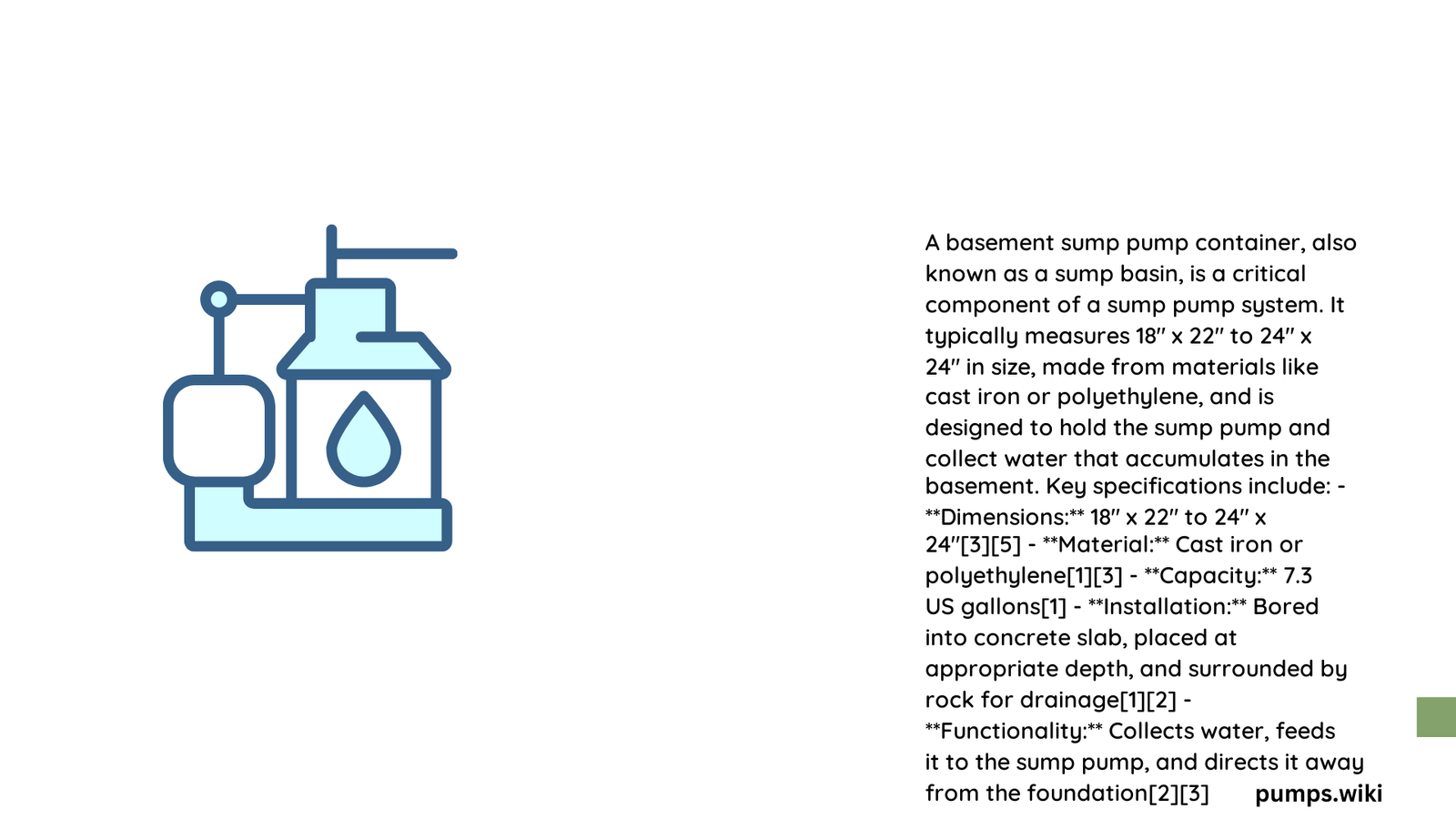A basement sump pump container is a critical component in managing groundwater and preventing basement flooding. These specialized basins collect and redirect water away from your home’s foundation, utilizing precise engineering to ensure efficient water removal through strategically designed pumping systems. Understanding their specifications, materials, and installation requirements is essential for homeowners seeking comprehensive water management solutions.
What Are Standard Dimensions for Basement Sump Pump Containers?
Typical Basin Sizes
Sump pump containers come in multiple standard dimensions to accommodate various residential needs:
| Basin Size | Diameter | Typical Capacity |
|---|---|---|
| Small | 18″ x 22″ | 15-20 gallons |
| Medium | 18″ x 30″ | 25-30 gallons |
| Large | 24″ x 24″ | 35-40 gallons |
Volume Calculation Principles
- Each inch of basin depth represents approximately 1-2 gallons of water
- Larger diameters provide increased water collection capacity
- Recommended basin depth: Minimum 24 inches for optimal performance
How Do Materials Impact Basement Sump Pump Container Performance?

Material Comparison
Selecting the right material significantly influences the container’s durability and effectiveness:
Polyethylene Containers
- Pros:
- Lightweight
- Corrosion-resistant
- Cost-effective
- Cons:
- Limited heavy-duty applications
- Potential UV sensitivity
Fiberglass Containers
- Pros:
- Extremely durable
- High load-bearing capacity
- Excellent chemical resistance
- Cons:
- Higher initial cost
- Complex installation process
What Are Critical Installation Considerations?
Preparation Steps
- Identify lowest basement point
- Ensure proper drainage slope
- Check local building codes
- Prepare necessary tools
- Drill
- Level
- Measuring tape
- Waterproof sealant
Professional Recommendations
- Maintain minimum 2-foot clearance around the container
- Install with slight inclination towards discharge pipe
- Use rubber gaskets for watertight connections
- Consider professional assessment for complex drainage scenarios
How Can Homeowners Optimize Sump Pump Container Performance?
Maintenance Strategies
- Quarterly basin inspection
- Remove sediment accumulation
- Check pump functionality
- Verify discharge pipe integrity
- Test backup power systems
Performance Enhancement Techniques
- Install debris screens
- Use high-quality check valves
- Consider battery backup systems
- Implement regular lubrication protocols
What Factors Influence Container Selection?
Environmental Considerations
- Local rainfall intensity
- Groundwater table levels
- Soil composition
- Home foundation design
- Regional climate patterns
Technical Selection Criteria
- Water volume expectations
- Pump horsepower requirements
- Vertical lift distance
- Discharge pipe diameter
- Electrical infrastructure
Expert Insights: Basement Sump Pump Container Best Practices
Key Takeaways
- Prioritize proper sizing
- Invest in quality materials
- Implement preventative maintenance
- Consider professional installation
- Monitor system performance regularly
Warning Signs
- Unusual pump cycling
- Persistent moisture
- Unexpected noise
- Slow water discharge
- Visible container damage
Conclusion
A well-designed basement sump pump container represents a critical investment in home protection. By understanding dimensional requirements, material characteristics, and installation nuances, homeowners can effectively manage water intrusion risks.
